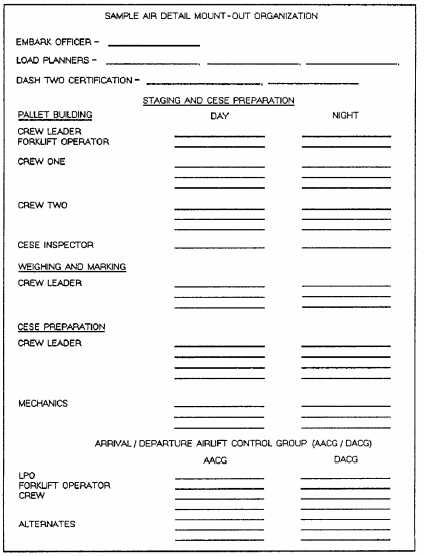det should divide into two shifts (fig. 2-19) to achieve
maximum production and to avoid overworking the
troops.
The equipment platoon supervisor plays a
key role, along with the air det staff, when
prioritizing CESE and supplies to be mounted out.
Certain CESE and supplies, such as tractor and
trailers, forklifts, the maintenance field crew
truck, light plants, and various tools, are required.
These CESE and supplies are used to support the
building of pallets, disassembly of CESE,
breakdown of the camp, garbage runs, hauling of
CESE, and transport supplies and personnel to the
staging area. This movement from the campsite to
the airfield may require a tactical or nontactical
convoy procedure.
Another area the equipment supervisor must
consider is a productive method for washing and
preparing CESE for the mount-out. The task of
cleaning CESE is one that must not be overlooked
and should be addressed before deploying to the
mission site. The prepping of CESE in the field can be
a time-consuming task and, if not properly planned,
could result in not meeting the deadline for the joint
inspection.
An efficient means for washing CESE is to
locate a washrack or to build one. Some
considerations in selecting the location of the
washrack are as follows: the distance the CESE must
be driven once it has been washed, the amount of
water required to wash each piece of CESE (if using
the water truck), and the distance the water truck
must travel to obtain water.
A pressure washer located at the washrack is
desirable and should be augmented to the air det;
however, they are sometimes hard to obtain. Some
Figure 2-19.—Sample of the air det mount-out organization.
2-17


